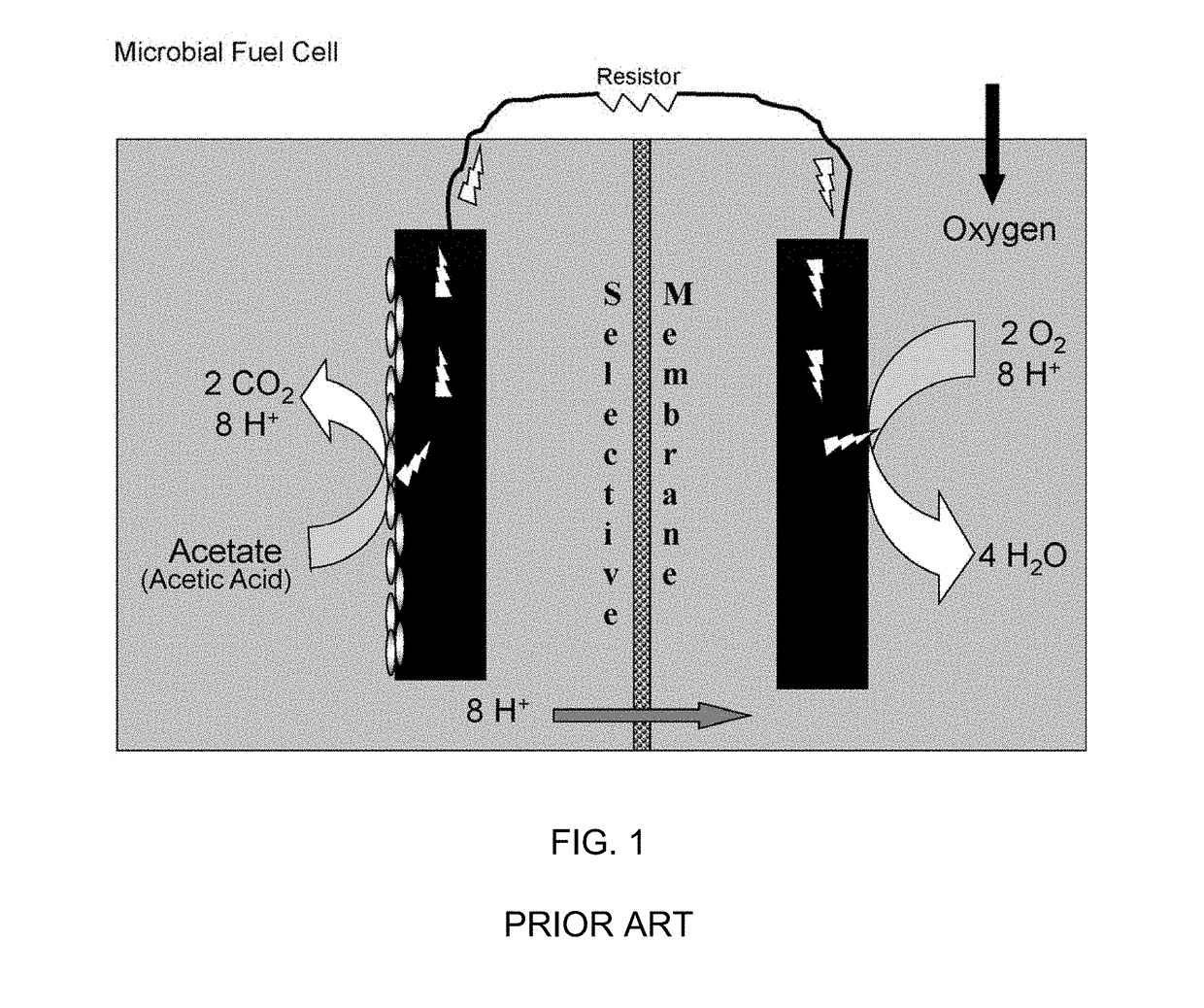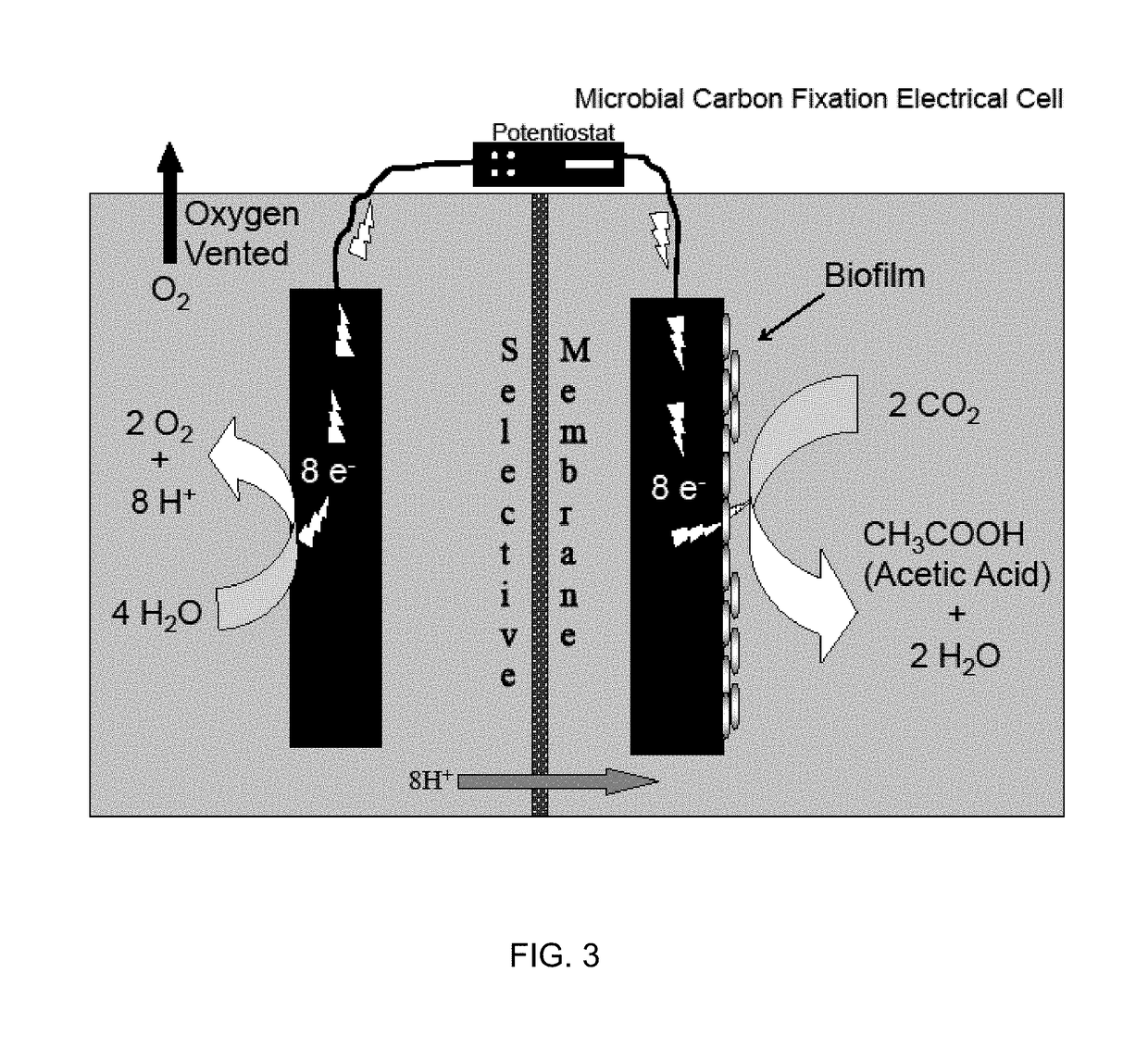Microbial production of multi-carbon chemicals and fuels from water and carbon dioxide using electric current
a multi-carbon chemical and fuel technology, applied in the chemical field, can solve the problems that Cheng and co-workers did not foresee the possibility of reducing carbon dioxide to form covalent carbon-carbon bonds
- Summary
- Abstract
- Description
- Claims
- Application Information
AI Technical Summary
Benefits of technology
Problems solved by technology
Method used
Image
Examples
Embodiment Construction
[0078]The discovery of electrotrophs, microorganisms that can directly accept electrons from electrodes for the reduction of terminal electron acceptors, has spurred the investigation of a wide range of potential applications. To date, only a handful of pure cultures have been shown to be capable of electrotrophy, but this process has also been inferred in many studies with undefined consortia. Potential electron acceptors include: carbon dioxide, nitrate, metals, chlorinated compounds, organic acids, protons and oxygen. Direct electron transfer from electrodes to cells has many advantages over indirect electrical stimulation of microbial metabolism via electron shuttles or hydrogen production. Supplying electrons with electrodes for the bioremediation of chlorinated compounds, nitrate or toxic metals may be preferable to adding organic electron donors or hydrogen to the subsurface or bioreactors.
[0079]We propose the term “microbial electrosynthesis” for the reduction of carbon diox...
PUM
| Property | Measurement | Unit |
|---|---|---|
| outer diameter | aaaaa | aaaaa |
| outer diameter | aaaaa | aaaaa |
| volume | aaaaa | aaaaa |
Abstract
Description
Claims
Application Information
 Login to View More
Login to View More - R&D
- Intellectual Property
- Life Sciences
- Materials
- Tech Scout
- Unparalleled Data Quality
- Higher Quality Content
- 60% Fewer Hallucinations
Browse by: Latest US Patents, China's latest patents, Technical Efficacy Thesaurus, Application Domain, Technology Topic, Popular Technical Reports.
© 2025 PatSnap. All rights reserved.Legal|Privacy policy|Modern Slavery Act Transparency Statement|Sitemap|About US| Contact US: help@patsnap.com



